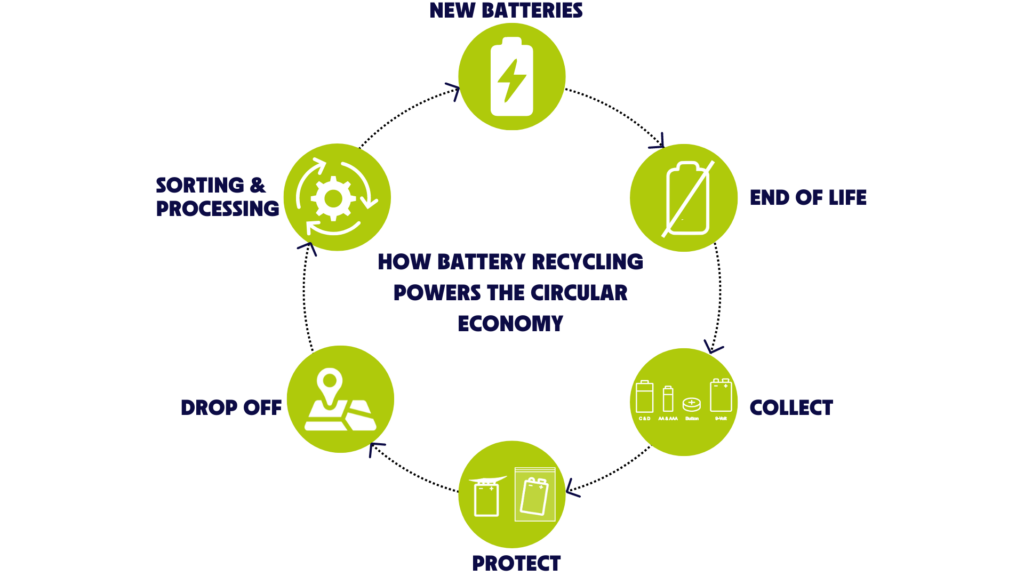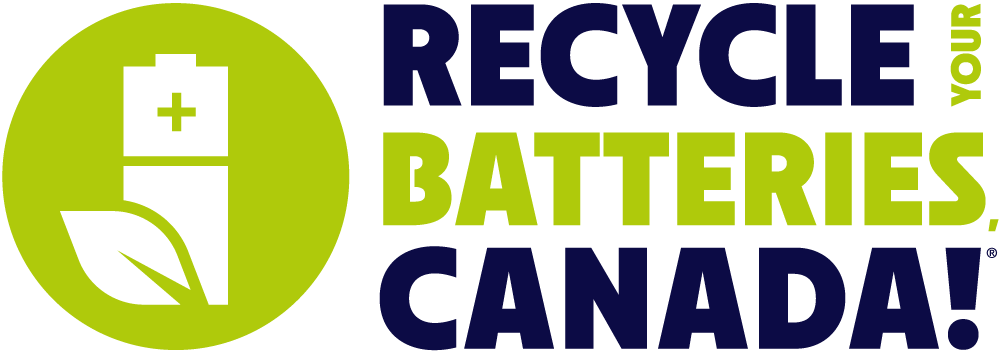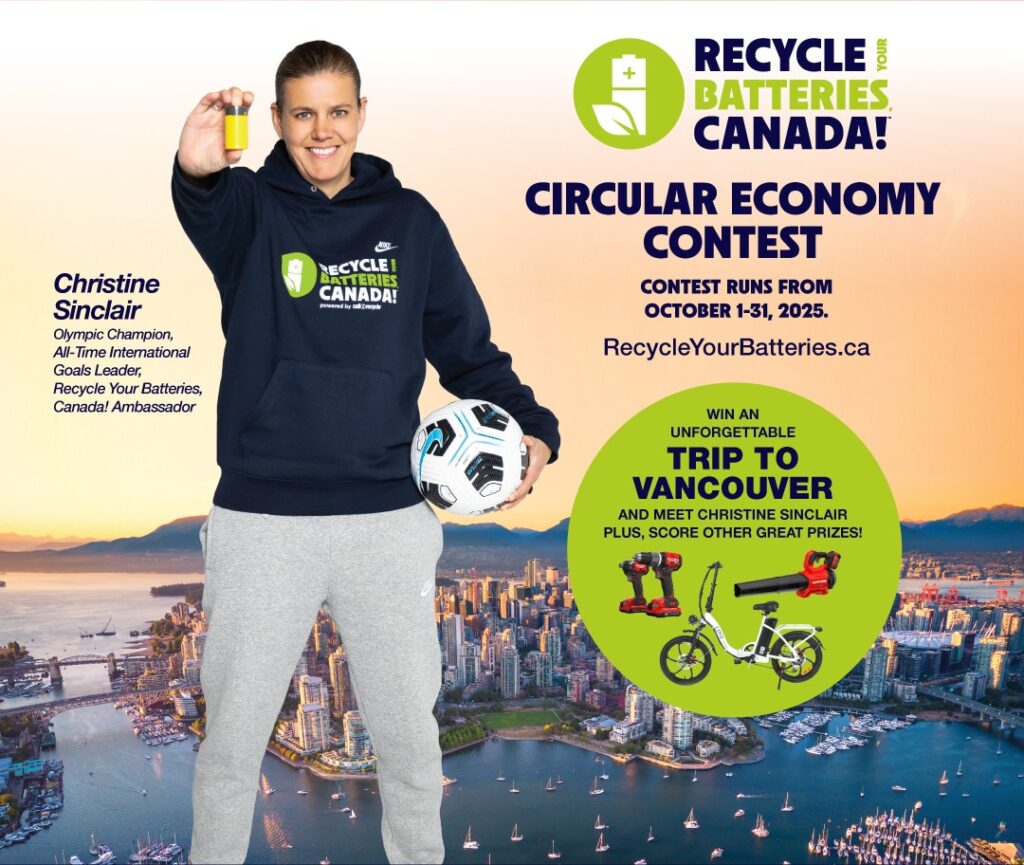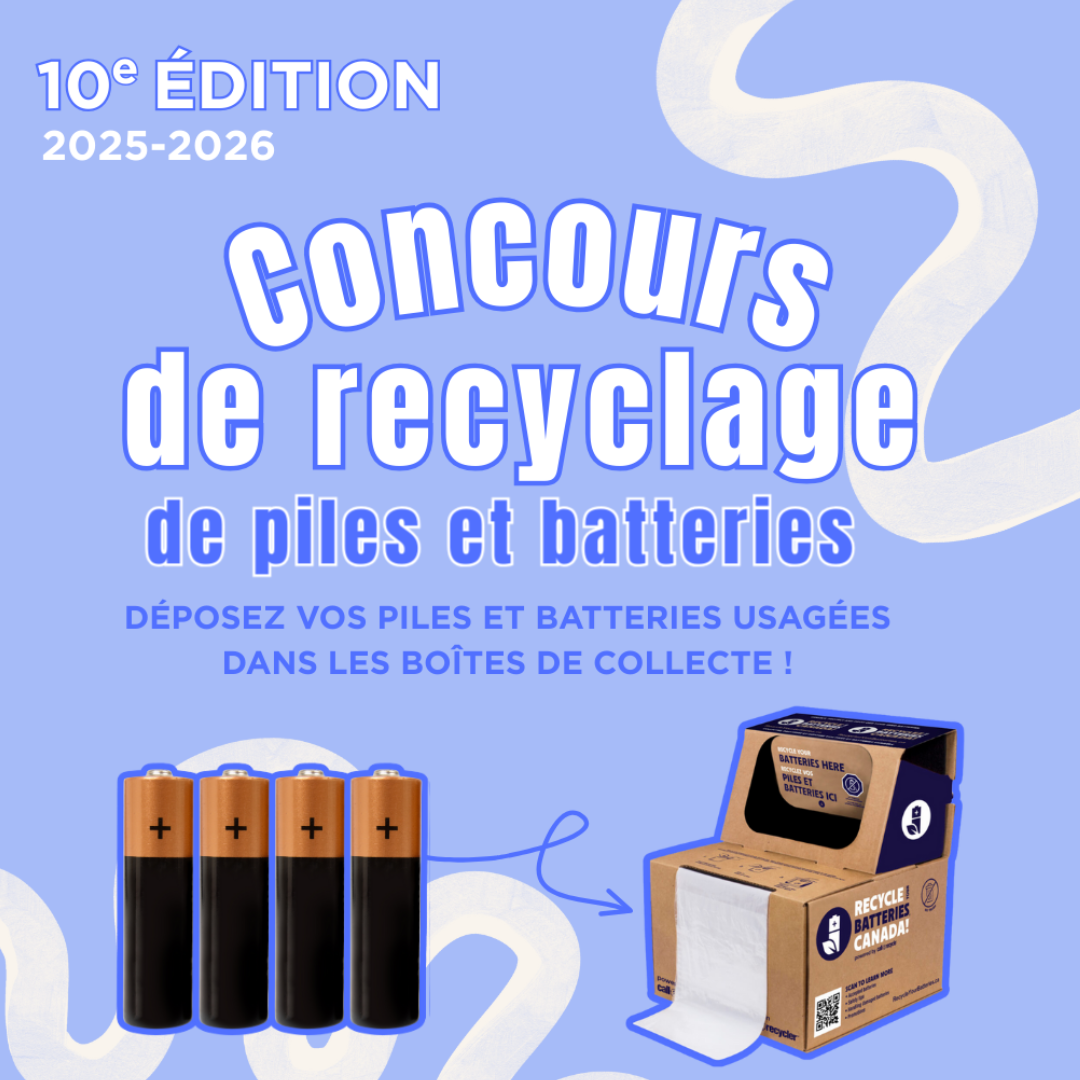October is Circular Economy Month! This month invites us to rethink how we use and re-use materials, with a focus on reducing waste, conserving resources, and supporting Canada’s transition to a circular economy.
One simple way to make a difference and get involved is to recycle your batteries which helps keep valuable materials in circulation and protects our environment.
What is a Circular Economy?
A circular economy reduces waste by keeping materials in use for as long as possible. Unlike the traditional “take-make-waste” model, where resources are consumed and discarded, a circular economy focuses on re-using, repairing, and recycling existing resources. This approach helps conserve scarce resources, reduces waste, and also creates a more sustainable, affordable, and less cluttered world.
Why is Battery Recycling Important for the Circular Economy?
Battery-powered devices serve an essential role in our society, from children’s toys to laptops and smoke alarms. As we convert more devices, tools and even vehicles to clean, battery-powered energy, the demand for the resources used to make these batteries will grow.
Battery recycling is essential to help ensure a stable supply of these scarce resources. It is an essential part of building a strong circular economy, where materials are re-used, recycled, and repurposed, rather than discarded.
By recycling your used batteries, you are contributing to the circular economy in several ways:
- Extending the life of resources: Valuable materials recovered from used batteries lithium, cobalt, and nickel, can be transformed into new batteries or other everyday products like bicycles, appliances and tools.
- Reducing the need for new extraction: Recycling lessens the demand for mining and processing of raw materials, which helps conserve natural resources and reduces pressure on ecosystems.
- Lowering environmental impacts: Recycled battery materials can carry a carbon footprint up to four times1 smaller than those sourced directly from mining, supporting a more sustainable way of producing goods.
- Closing the loop: Each battery recycled ensures that materials re-enter the production cycle instead of being wasted, strengthening Canada’s transition to a circular economy where nothing goes to waste.

It is important for us to think about the impact we can make by recycling instead of throwing batteries away. However, it is even more important to turn these thoughts into action. How will you make a difference this month?
Enter the 2025 Circular Economy Contest with Christine Sinclair
This October, we are excited to team up with Canadian soccer legend Christine Sinclair to launch the Circular Economy Contest.
Here’s how you can take part:
- Drop off your used batteries at any Recycle Your Batteries, Canada! participating location
- Scan the QR code on the collection boxes, smart containers, or posters
- Enter for a chance to win an unforgettable trip to Vancouver to meet Christine Sinclair in person!
The grand prize includes:
- Round-trip airfare to Vancouver
- Hotel accommodations
- $500 spending money
- A meet-and-greet with Christine Sinclair
It’s that simple – recycle your batteries, protect the planet, and you could score the experience of a lifetime!
How You Can Contribute to the Canadian Circular Economy
- Recycle your used batteries: collect, protect, and drop off at your nearest participating location.
- Learn and share. Explore resources about the circular economy and waste reduction, spread the word to friends and family.
- Get involved and inspired. Participate in Circular Economy Month events happening near you! Get inspired on how to support Canada’s circular economy.
1 Source: McKinsey: The race to decarbonize electric-vehicle batteries










